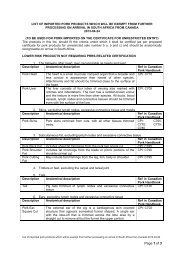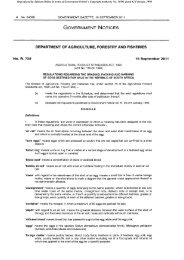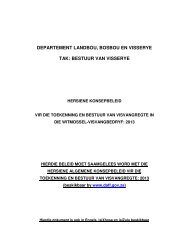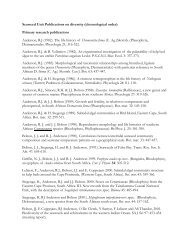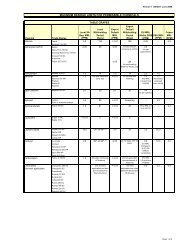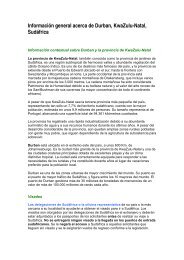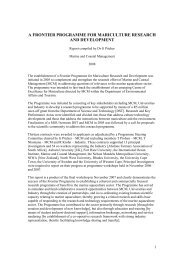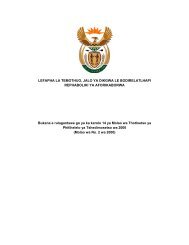Create successful ePaper yourself
Turn your PDF publications into a flip-book with our unique Google optimized e-Paper software.
I<br />
t may seem surprising that animals as diverse as<br />
the floating bluebottle, the lime-encrusted noble<br />
coral and the tiny, feathery sea firs should be<br />
grouped together in the class Hydrozoa. They all<br />
consist of colonies made up of simple individuals<br />
called polyps, with a ring of tentacles around their<br />
mouths. Their complex life cycles involve both a<br />
polyp and a medusa stage resembling a jellyfish.<br />
The medusa is a bell-shaped floating sexual phase<br />
and produces the eggs and sperm. The hydrozoans<br />
are the most primitive members of the phylum<br />
Cnidaria, which includes jellyfish, corals and<br />
anemones. Cnidarians are typically radially<br />
symmetrical and the body wall has only two layers<br />
– an ectoderm and an endoderm – separated by a<br />
jelly-like mesogloea. They have simple muscles and<br />
a nervous system, so are capable of movement.<br />
The hydrozoans are divided into three distinct orders:<br />
the Siphonophora<br />
(bluebottles), the Hydroida<br />
(sea firs, hydroids) and<br />
the Milleporina (noble<br />
corals).<br />
Bluebottles<br />
The most familiar member of the<br />
class Hydrozoa is Physalia –<br />
commonly known as the<br />
Portuguese-man-of-war or<br />
b l u e b o t t l e – which belongs to<br />
the o rder Siphonophora. The<br />
b l u e b o t t l e is actually a colony<br />
composed of individual modified<br />
polyps and medusae, each doing a<br />
different job and attached to a gas-<br />
filled float.<br />
The colony develops through a<br />
process of budding. An egg<br />
hatches into an individual medusa<br />
that forms the float. All the individuals<br />
Bluebottle<br />
g row from buds on this float until the mature colony has the<br />
C O A S TA L A N D M A R I N E L I F E – A N I M A L S : I N V E RT E B R A T E S – C N I D A R I A N S<br />
Bluebottles 3B<br />
Nomeus shelters<br />
unharmed in the tentacles<br />
full complement of feeding, catching and reproducing<br />
members. The float, which has a crest that acts as a sail,<br />
may reach 10 cm in South Africa, though giants 30 cm long<br />
occur elsewhere. It is filled with gas, consisting of up to 90%<br />
nitrogen and 5-20% carbon monoxide, produced by a special<br />
gas gland on the side of the float. The float is capable of<br />
movement, and regularly flops sideways into the water to<br />
prevent it from drying out, and adjusts its shape and position<br />
to change the sail’s angle to the wind. All cnidarians possess<br />
unique stinging cells with threads coiled inside them. When<br />
touched the cells discharge their threads, which are armed with<br />
spines and loaded with venom. In the bluebottle these stings<br />
are concentrated on long tentacles called dactylozoids, which<br />
a re used to catch prey such as small fish and zooplankton. The<br />
sting can be extremely painful to humans. The dactolyzoids<br />
are capable of the most astonishing contraction, shortening<br />
from as much as 10 m down to 10 cm and bring the prey to<br />
the gastrozoids, the feeding individuals. Individuals of a third<br />
type, the gonozoids, are responsible for reproduction, and<br />
produce the eggs and sperm.<br />
Certain sea slugs and snails can feed unharmed on blue<br />
bottles, despite their powerful stings. Bubble raft shells float<br />
alongside bluebottles nibbling their tentacles. The sea swallow,<br />
Glaucus, takes this one step further and transmit the stinging<br />
cells through the gut of the sea slug without causing any<br />
By-the-wind<br />
sailor<br />
Porpita<br />
damage and pass them to the surface of the slugs skin<br />
where they provide a second-hand stinging defense. When<br />
bluebottles wash ashore plough shells devour them.<br />
Some animals derive protection from predators by being<br />
associated with bluebottles in symbiotic relationships. For<br />
example, a particular fish, N o m e u s, shelters among the tentacles<br />
of bluebottles without being affected by the nematocysts.<br />
Two other siphonophorans are often stranded on the beach.<br />
The by-the-wind sailor, Velella has a delicate air-filled raft with<br />
an upright sail. Beneath the raft hangs a central feeding<br />
gastrozoid surrounded by gonozoids and a fringe of short<br />
stinging tentacles. Porpita is similar but lacks the sail.





